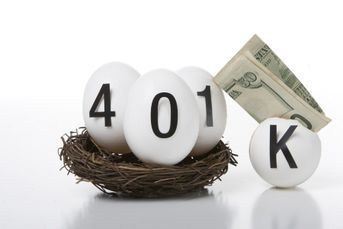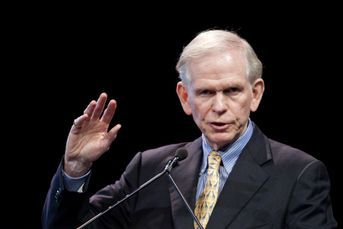The Dow Jones Industrial Average, aka the big engine that could
Co-author of 'Dow 36,000' says blue chip barometer can still get there.
By James K. Glassman
The Dow Jones Industrial Average set a record this week, but it’s still far from the mark that economist Kevin Hassett and I forecast in our 1999 book, “Dow 36,000.”
We wrote in the introduction that “it is impossible to predict how long it will take” to get to 36,000. Then, in the same paragraph, we rashly made a guess anyway: “between three and five years.”
Today, the far edge of that time frame is clearly in reach. From its low of 6,547 on March 9, 2009, the Dow has risen 117 percent. Another 117 percent in four years would put it at 31,022, just 16 percentage points shy of the magic number.
When we wrote our book, we expected that the stock market, as represented by the 30 blue chips of the Dow, would rise to 36,000 for two reasons.
First, investors had mistakenly judged the risk in stocks to be greater than it really was. Here, we drew from the work of Jeremy Siegel of the Wharton School of the University of Pennsylvania. He showed that, over long periods, stocks were no more volatile, or risky, than bonds.
We saw indications that the risk aversion of investors was declining — as we believed it should. Lower perceived risk would mean higher stock valuation measures: rising price-to- earnings ratios, for instance.
Second, we assumed that real U.S. gross domestic product, the main driver of corporate profit growth, would rise at 2.5 percent a year — a bit below the historic post-World War II rate, but still a decent clip. We warned, however, that small changes in growth rates could have big effects on stock prices.
After 1999
What’s happened since 1999?
First, investors have become more frightened of stocks, not less — as reflected in a higher equity risk premium, the excess return that investors demand from stocks over bonds.
These fears may be perfectly reasonable. We wrote our book before the Sept. 11 attacks, the dot-com debacle, the 38 percent decline in stocks in 2008, the “flash crash” of 2010 that sent the Dow down 1,000 points in minutes, the Japanese tsunami and the euro crisis. There’s a good case to be made that, because of the instant interconnections wrought by new technology, unprecedented “black swan” events are increasing and markets are becoming more volatile as a result.
The heightened fears of investors are reflected in lower valuations. Currently, for example, the forward P/E ratio (based on estimated earnings for the next 12 months) of the Standard & Poor’s 500 Index is about 14. In other words, the earnings yield for a stock investment averages 7 percent (1/14), but the yield on a 10-year Treasury bond is only 1.9 percent — a huge gap. Judging from history, you would have to conclude that bonds are vastly overpriced, that stocks are exceptionally cheap or that investors are scared to death for a good reason. Maybe all three.
One way stocks could jump to 36,000 quickly would be for fears to subside and P/E ratios to rise. Assume that earnings yields fall to 5 percent. That would mean P/E ratios would go to 20, a boost of 50 percent in stock prices, assuming constant earnings.
The second thing that’s been unexpected since our book came out is that U.S. growth has drastically slowed. Instead of the historic rate of 3 percent, or our projected rate of 2.5 percent, actual annual real GDP increases from the end of 1999 to the end of 2012 averaged just 1.8 percent. Inflation was lower than normal, too, so the nominal rate of growth was only about 4 percent, instead of about 6 percent.
Growth Matters
If you knock two percentage points off nominal growth a year — and assume that this lower growth continues — then the value of a business, which is determined by the present value of all the profits it will ever earn, will be dramatically depressed.
Let’s set investor fears aside for a moment. For investment gains over the long term, there is absolutely no substitute for faster economic growth.
To get it, we need policy changes that will create a better environment for businesses to increase revenue, profits and jobs: a rational tax system that keeps rates low and eliminates special deductions and credits; immigration laws that encourage the best and the brightest to move here and stay; entitlement reform to bring down costs and provide incentives for productive seniors to keep working; sensible environmental, workplace and financial regulation that allows entrepreneurship to thrive; a K-12 education system that boosts student achievement and holds teachers, administrators and politicians accountable …
Chime in and make your own list, because it’s time to focus on what counts in an economy: growth. Even with relatively high risk aversion (let’s say, what we have now), faster growth would significantly increase stock prices.
How fast can the U.S. grow? Four percent is attainable, but I’d settle for 3 percent. Get there quickly, and we’ll get to Dow 36,000 quickly, too.
— Bloomberg News —
Learn more about reprints and licensing for this article.








